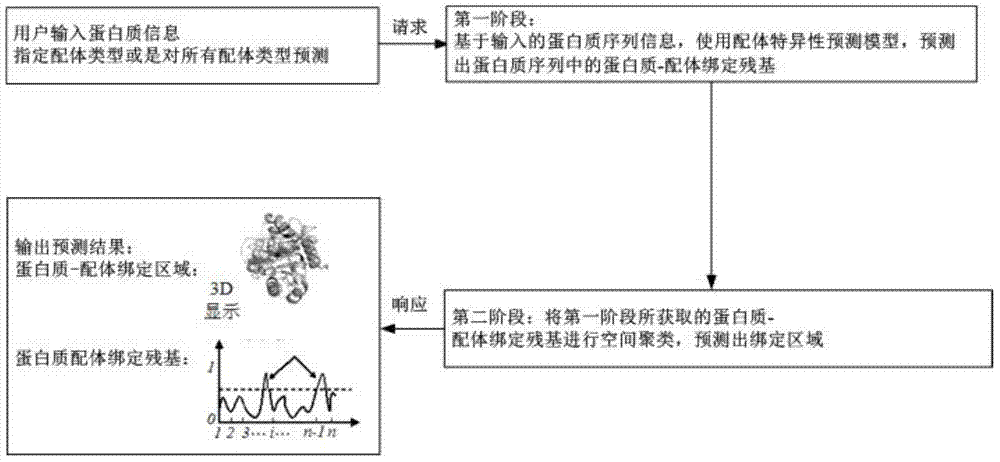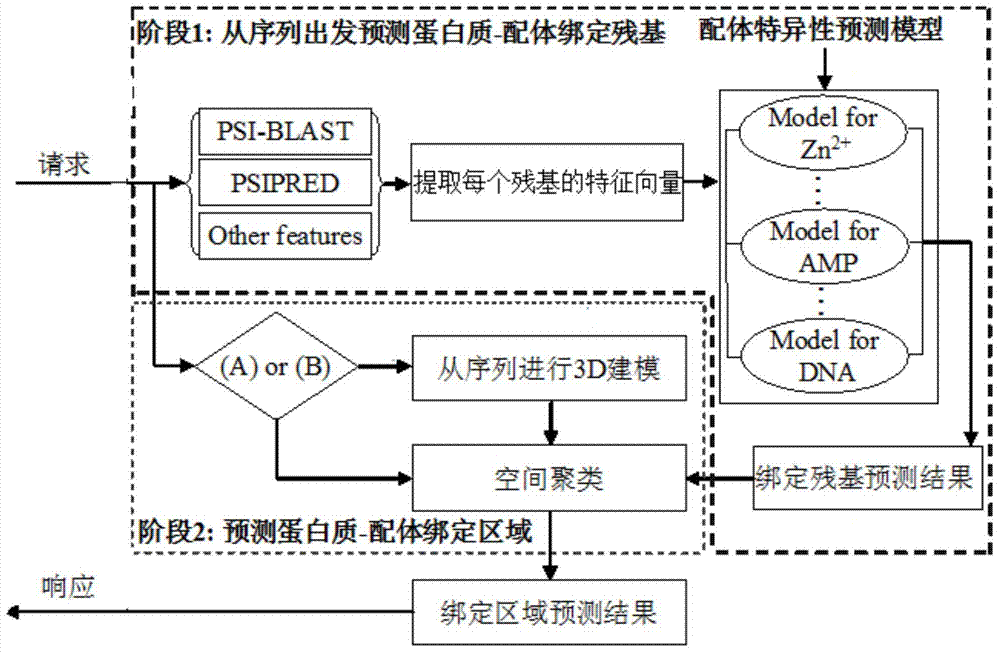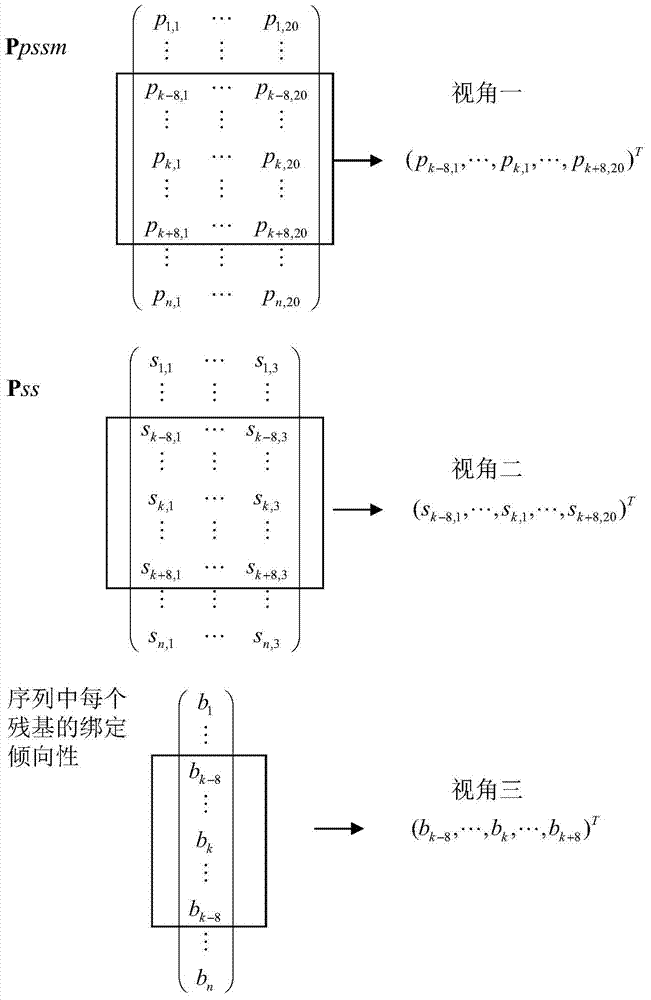Ligand specificity protein-ligand binding area forecasting method
A binding area and prediction method technology, applied in special data processing applications, instruments, calculations, etc., can solve the problems of reducing the reliability of prediction results and not fully considering the differences in ligand types
- Summary
- Abstract
- Description
- Claims
- Application Information
AI Technical Summary
Problems solved by technology
Method used
Image
Examples
Embodiment Construction
[0035] In order to better understand the technical content of the present invention, specific embodiments are described below in conjunction with the accompanying drawings.
[0036] Such as Figure 1-2 As shown, according to the preferred embodiment of the present invention, the ligand-specific protein-ligand binding region prediction method includes the following steps: Step 1: Based on the input protein sequence information, use the ligand-specific prediction model to predict The process of protein-ligand binding residues in the protein sequence is as follows: Step 1.1: Use the PSI-BLAST algorithm to extract the evolution information of the protein sequence, use the PSIPRED algorithm to extract the secondary structure information of the protein sequence, and count the 20 basic amino acids The binding tendency of different ligands; then use the sliding window method to represent each residue in the protein sequence with multi-view features; Step 1.2: Use the pre-trained ligand-sp...
PUM
 Login to View More
Login to View More Abstract
Description
Claims
Application Information
 Login to View More
Login to View More - R&D
- Intellectual Property
- Life Sciences
- Materials
- Tech Scout
- Unparalleled Data Quality
- Higher Quality Content
- 60% Fewer Hallucinations
Browse by: Latest US Patents, China's latest patents, Technical Efficacy Thesaurus, Application Domain, Technology Topic, Popular Technical Reports.
© 2025 PatSnap. All rights reserved.Legal|Privacy policy|Modern Slavery Act Transparency Statement|Sitemap|About US| Contact US: help@patsnap.com



